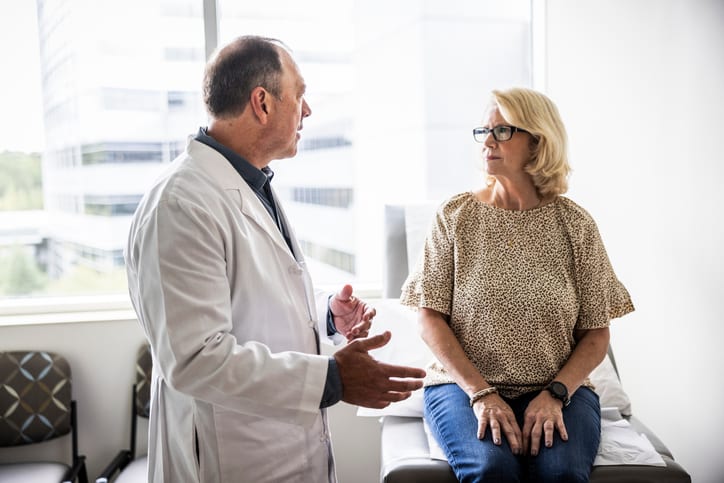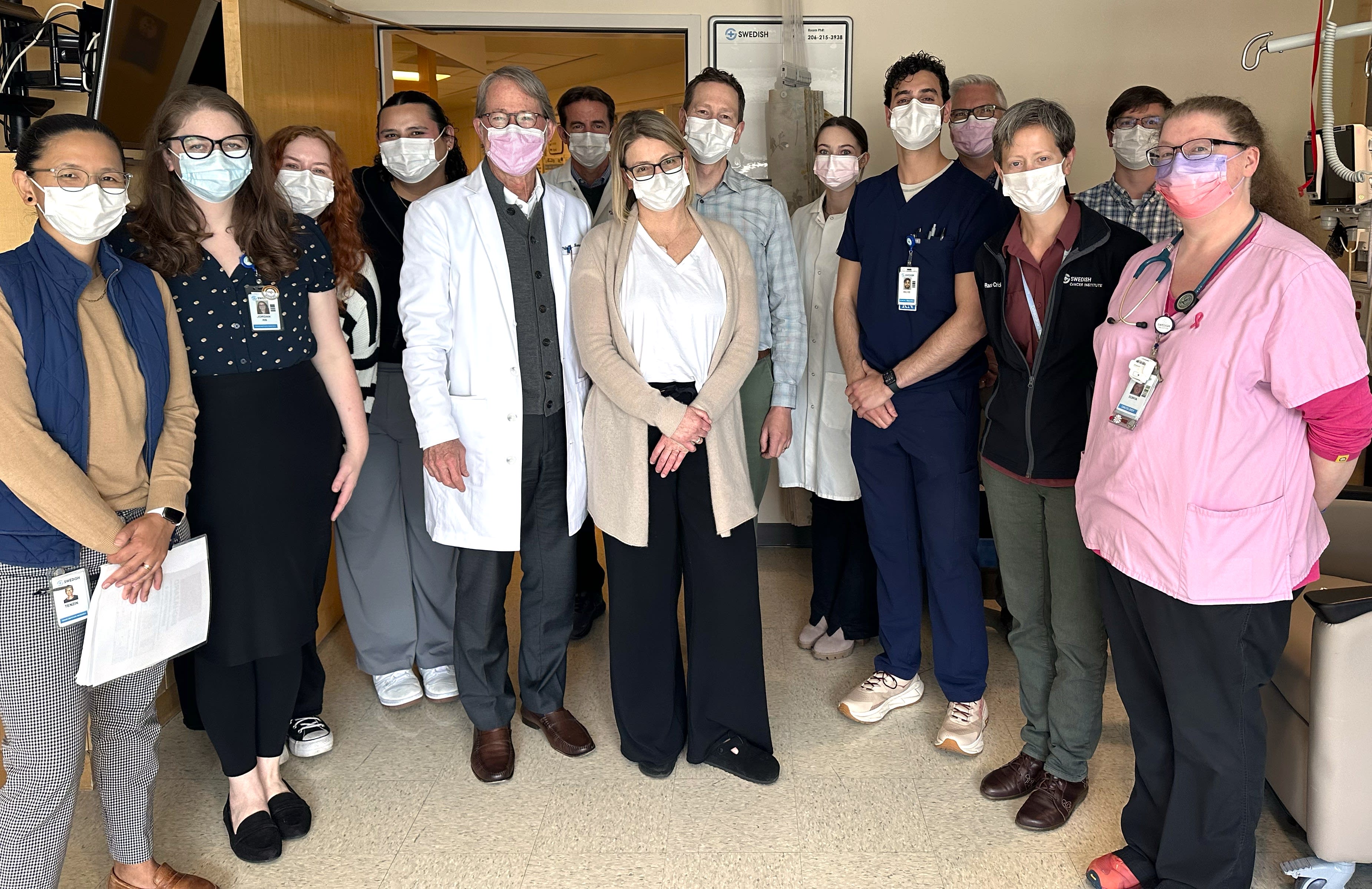Mastectomy surgeries offer patients single-procedure reconstruction and reduced loss of sensation
[5 min read]
In this article:
- Patients with breast cancer are often faced with wrenching decisions about their bodies.
- Nipple and sensation-sparing mastectomies are helping patients live more comfortably in their own skin.
- The first nerve graft associated with the procedure in Washington State was performed at Providence Swedish.
- A Providence Swedish breast surgical oncologist explains the surgeries, what they entail and who are the best candidates.
Breast cancer is the most diagnosed cancer among women in the United States. And after lung cancer, it’s the leading cause of cancer death among women. Treatment typically involves some combination of surgery, systemic therapy (chemotherapy or other medications), and radiation. In the past, radical mastectomy — complete removal of the breast, pectoralis muscle, and axillary lymph nodes — was the only option for many breast cancer patients, leaving them to face wrenching decisions about their bodies and identity.
More options for treatment
Today’s forward-thinking technology, research and operative techniques provide patients with a host of surgical options for breast cancer. At Swedish, experts offer patients mastectomy and reconstructive surgery that can help preserve their bodies as well as their sense of themselves.
Angelena Crown, M.D., is director of breast surgery research at Providence Swedish and deputy director of the breast surgery program at Swedish First Hill. She spoke with us recently about a pair of leading-edge surgical options available to Swedish patients: nipple-sparing mastectomy (NSM) and sensation-preserving mastectomy (SPM).
Preserving more sensation and more of the breast
As the name suggests, nipple-sparing mastectomy (NSM) aims to remove breast cancer while preserving the nipple and areola. NSM and SPM are different procedures but are often done at the same time — though SPM is not exclusively used in tandem with NSM.
“NSM is a form of mastectomy where we use a hidden scar incision from the inframammary fold, which is basically where an underwire would sit at the bottom of the breast,” says Dr. Crown. “It's a special approach to mastectomy that basically saves the entire breast skin envelope, including the nipple and areola. This type of surgery is often combined with what we call direct to implant reconstruction, meaning that on the same day that we take out the breast tissue, we can put a permanent implant in to fill the space that we created by removing the breast tissue.”
“One benefit is that it offers is that it’s a single stage, reconstructive procedure,” she says, adding that patients with smaller breasts are better candidates for the procedure from an anatomical standpoint.
With SPM, the nerves are identified and preserved, and in some cases grafted together, which helps maintain some sensation in the breast and chest wall, says Dr. Crown. Often, NPM can be combined with sensation-preserving mastectomy (SPM) which aims to preserve the nerves responsible for sensation in the breast. In the past, these nerves were routinely cut during the removal of breast tissue, leading to loss of sensation in the breast.
To provide more expansive options for mastectomy patients, Dr. Crown and Suzette Miranda, M.D., Division Chief of Plastic Surgery at Swedish Medical Center and the Medical Director of Swedish Plastic and Aesthetics, trained with the husband-and-wife team of surgeons who were early adopters of the procedure. Dr. Miranda is the first surgeon in Washington State to perform a nerve graft associated with the procedure.
“I really try to save the nerves when I do any form of mastectomy,” says Dr. Crown. “Whether it is someone who wants to go completely flat or has a skin sparing mastectomy because they don’t want to or can’t keep their nipple.”
“A lot of mastectomy patients worry about not being able to feel when someone touches them, hugs them or if something hot touches their skin,” says Dr. Crown.
“It’s important that patients understand the sensation is not always 100% normal; it’s like the difference between touching the back of your hand and touching your back. There is generally a difference in the fine granularity of sensation,” she says.
Growing use of the procedures, but not for everyone
Not every patient is an appropriate candidate for NSM. The procedure is generally not recommended for patients with large centrally located tumors or when they are proximity to the nipple areolar complex, as they may not be effective at removing all cancerous tissue. Additionally, patients who have undergone previous breast surgery or have certain types of breast cancer may not be candidates for NSM.
Guiding patients, not deciding for them
“When people are considering lumpectomy versus mastectomy, I think one advantage is that with mastectomy we often can avoid the need for radiation,” says Dr. Crown. “But what you're trading is a daily treatment given over the course of about four to six weeks for a bigger surgery.”
She also emphasizes that her role is to support and educate her patients, not decide for them.
“It’s one of the things that’s so special about being a breast surgical oncologist. You get to work with people at a really scary time in their lives and help them kind of plan for a future we expect will be cancer- free. We want to set them up for the life that they imagine for themselves but may have a hard time seeing in the moment of a terrible diagnosis,” says Dr. Crown. “I am there to help patients through their own decisions during n a time when everything may be clouded for them.”
Learn more and find a provider
If you or a loved one have questions about breast cancer diagnosis, treatment or care, the experts at Swedish Cancer Institute are here for you. We can accommodate both in-person and virtual visits.
Whether you require an in-person visit or want to consult a doctor virtually, you have options. Contact Swedish Primary Care to schedule an appointment with a primary care provider. You can also connect virtually with your provider to review your symptoms, provide instruction and follow up as needed. And with Swedish ExpressCare Virtual you can receive treatment in minutes for common conditions such as colds, flu, urinary tract infections, and more. You can use our provider directory to find a specialist or primary care physician near you.
Information for patients and visitors
Additional resources
After mastectomy, patients find a healing, helping hand at Swedish Plastics and Aesthetics
Talk With A Doc: Let's Talk Breast Cancer: Beyond the Pink Ribbon | Apple Podcasts
When should you get your first mammogram?
Cancer Prevention Resource Roundup
At Swedish, the very best care for every woman at every stage of life | KING 5
This information is not intended as a substitute for professional medical care. Always follow your health care professional’s instructions.




